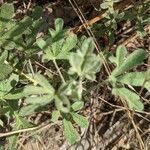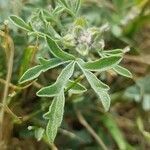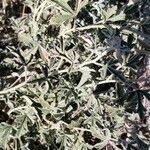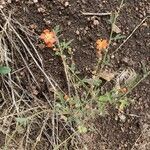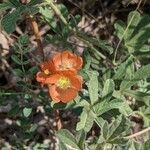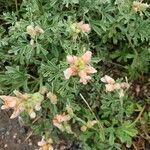Plants perennial, rhizomatous. Stems 3–6, ascending or decumbent, light green to grayish, 1–3(–5) dm, stellate-green. Flowers: sepals 5–10 mm; petals red-orange, 5–20 mm; anthers yellow. Schizocarps flattened spheric-conic; mericarps 10–14, 3–3.5 × 2.5–3 mm, thick, coriaceous, nonreticulate dehiscent part 10–35% of height, muticous, indehiscent part usually wider than dehiscent part. Seeds 1 per mericarp, gray to black, ± glabrous.
